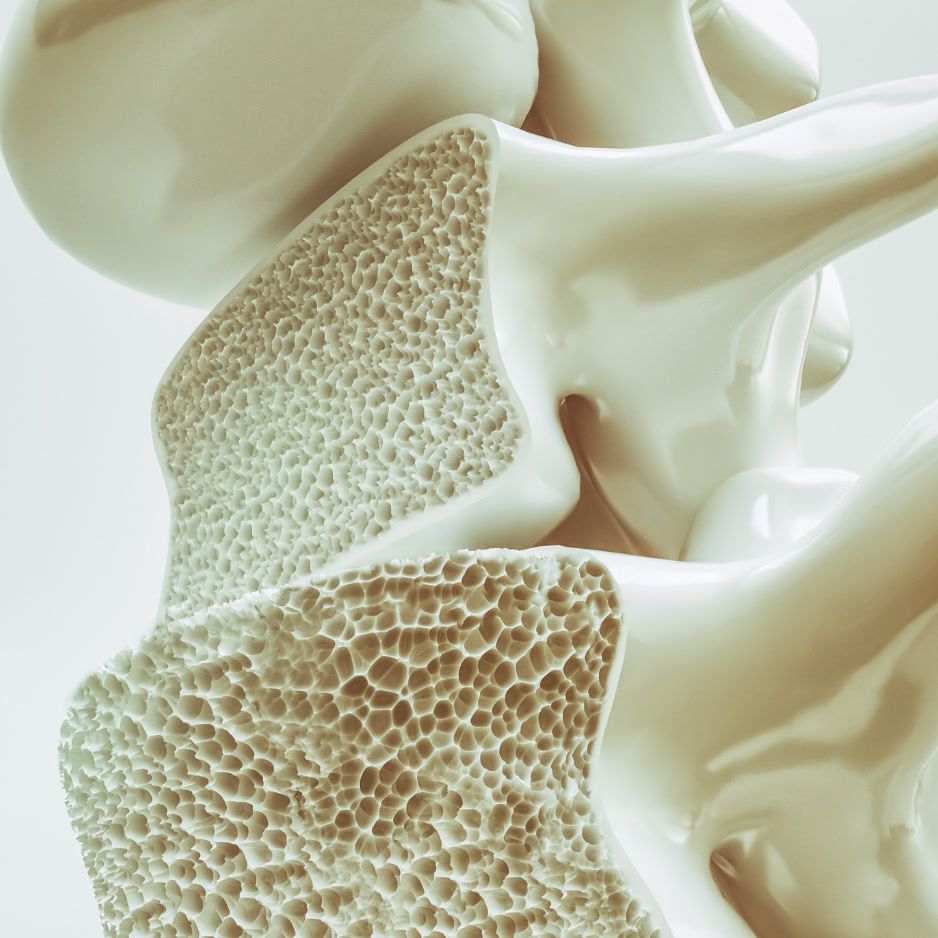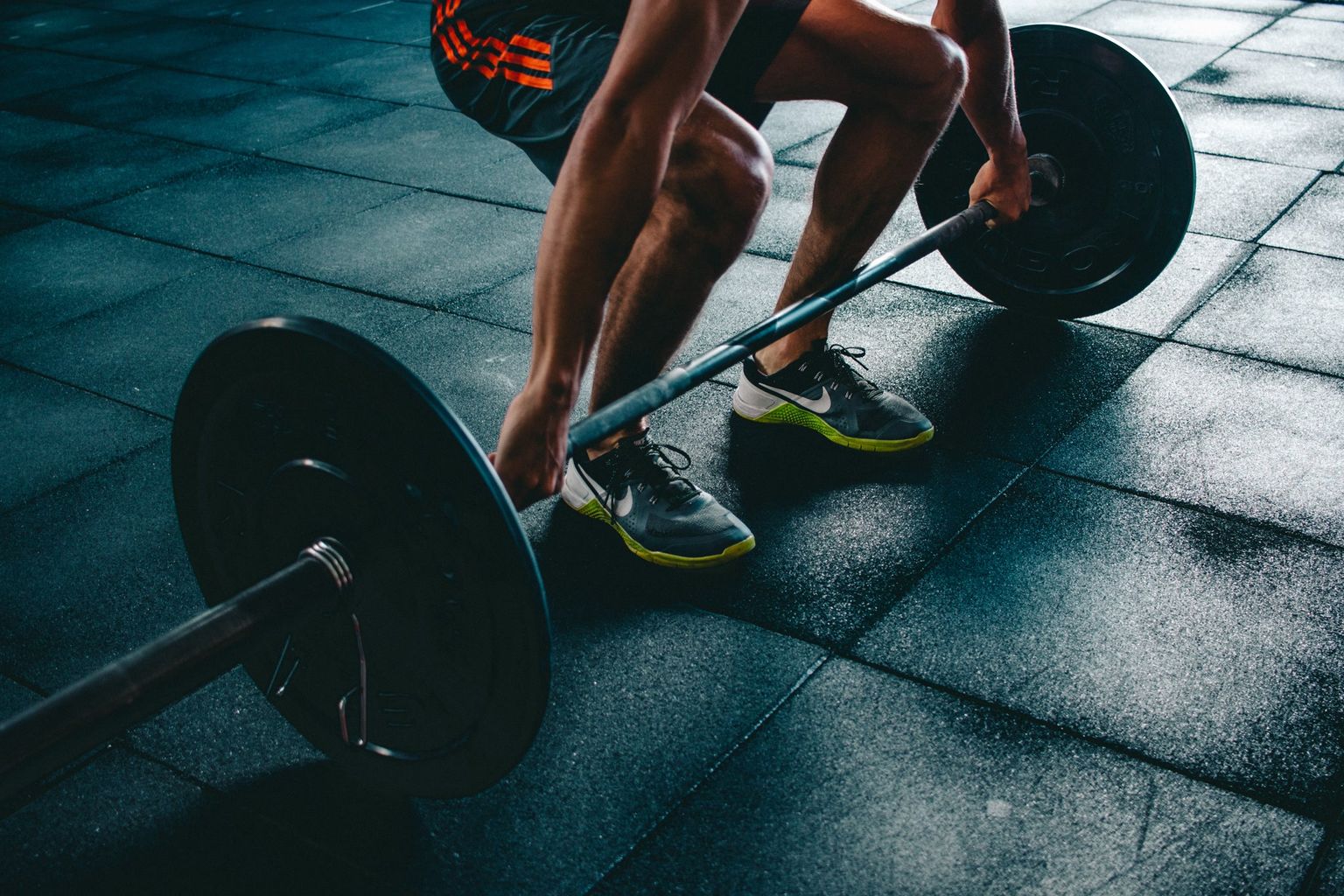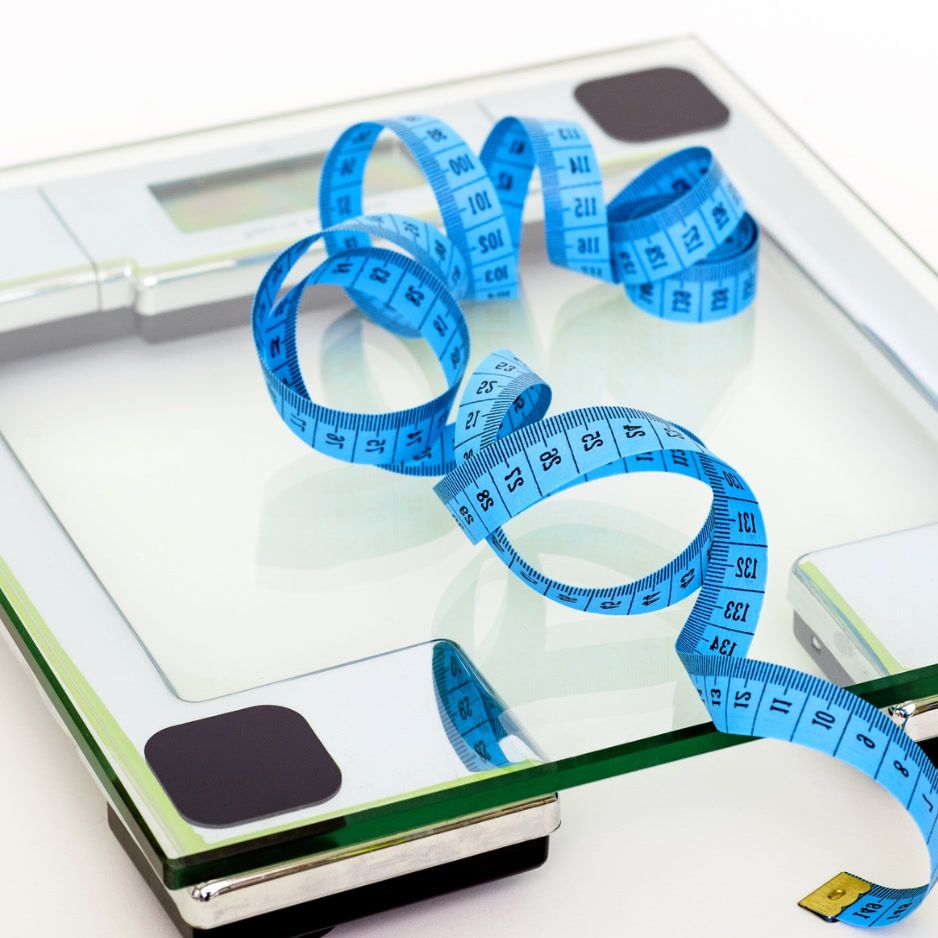When Should Women Get a Bone Density Test?
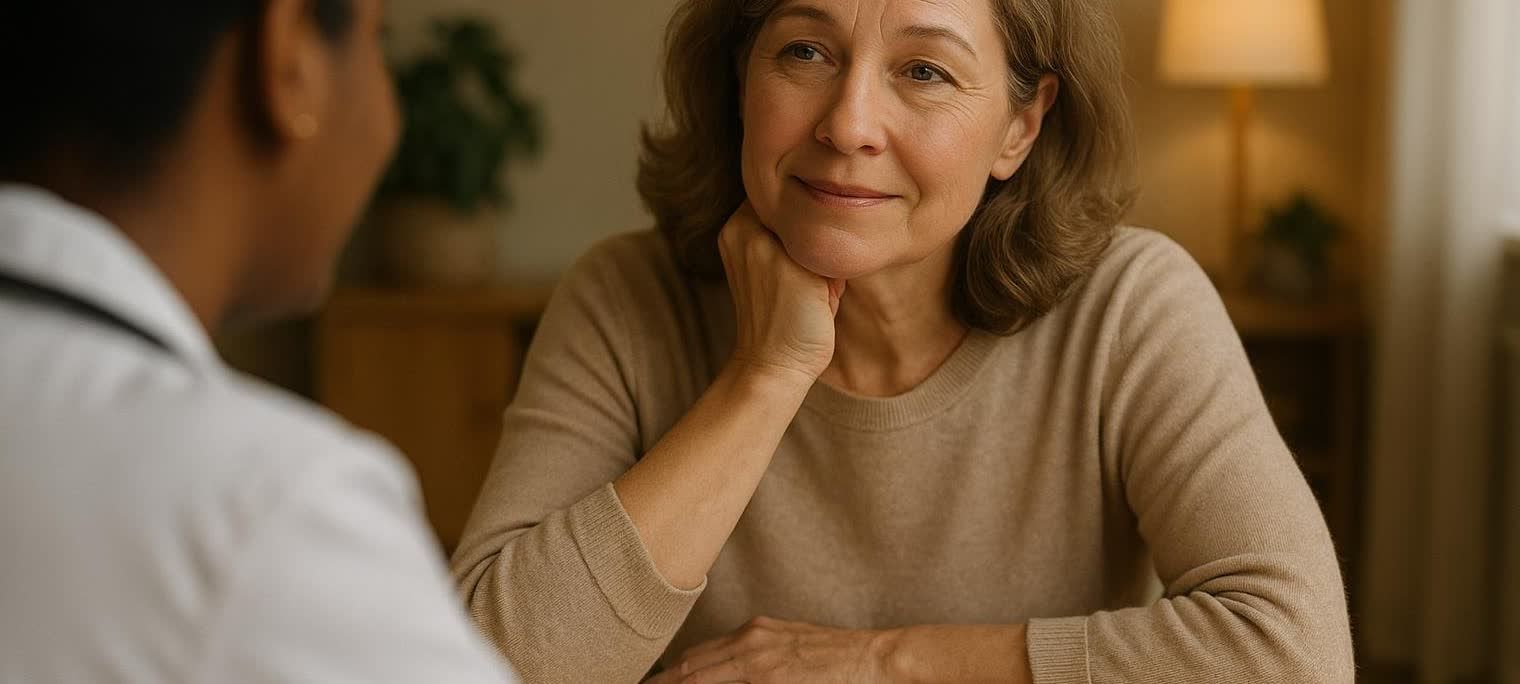
When Should Women Get a Bone Density Test? 2025 Guide
Most women should get their first bone density test—a diagnostic DEXA scan focused on the hip and spine—at age 65. Women between 50 and 64 who carry osteoporosis risk factors—such as early menopause, long-term steroid use, low body weight, or a parent who broke a hip—should test sooner. In rare cases (for example, severe eating disorders or endocrine diseases), doctors may recommend screening even earlier according to the current USPSTF guidelines.
A different type of scan, the whole-body DEXA, delivers an estimate of bone mineral density alongside body-fat and lean-mass data. BodySpec's non-diagnostic scan can be used as an early-detection tool—if your bone score comes back lower than expected, you can bring the report to your physician to discuss ordering a diagnostic scan or starting treatment.
Why Age Matters—But Isn’t the Whole Story
Bones thin as estrogen levels fall after menopause. That’s why 65 is the universal threshold—by then, nearly every woman has spent several low-estrogen years, and fracture risk rises sharply. The National Institute of Arthritis and Musculoskeletal and Skin Diseases explains the process in its overview of bone-density scores.
Age, however, is only one line on your fracture-risk report card. Lifestyle, medications, genetics, and medical conditions can raise or lower risk at any age.
Common Risk Accelerators
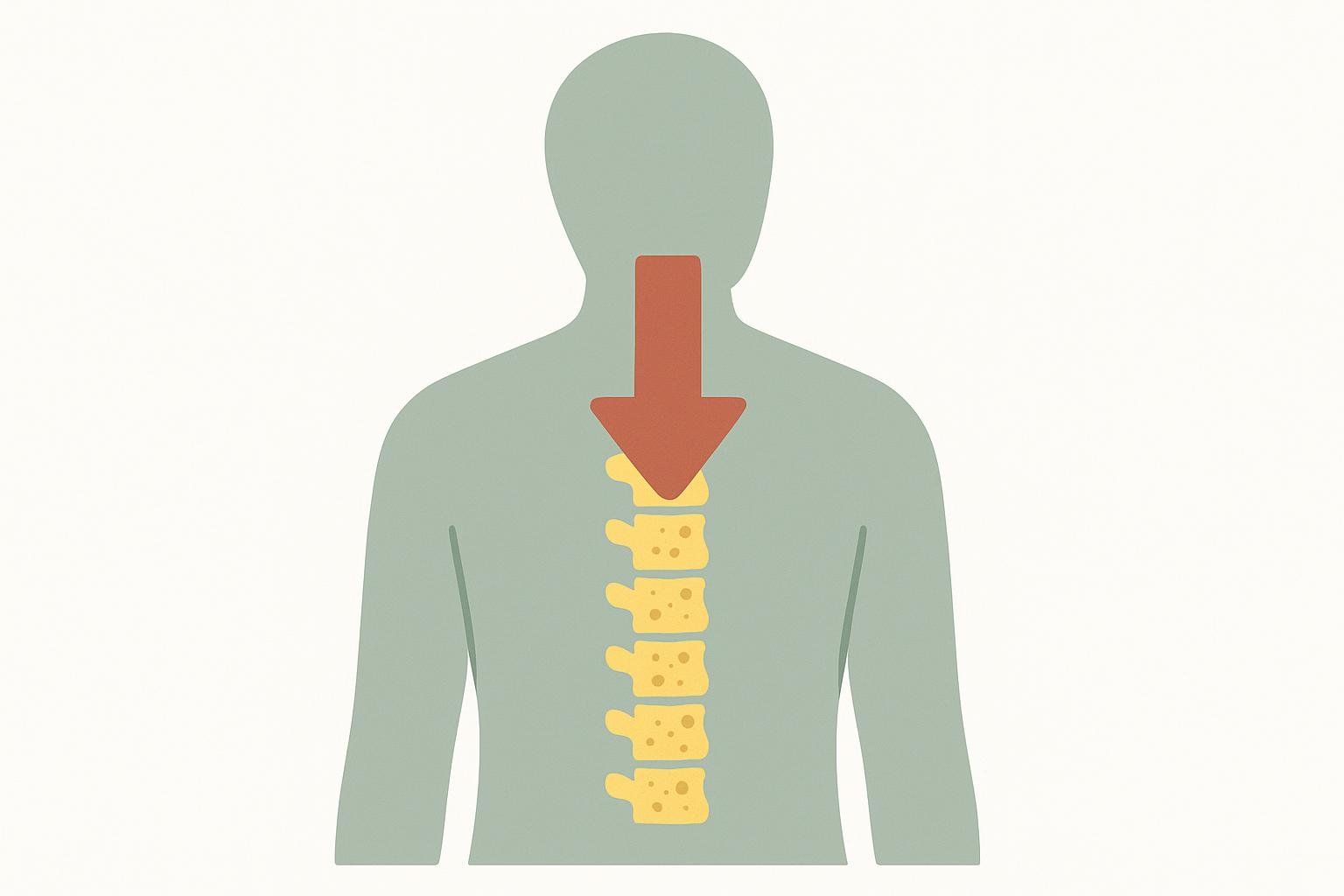
- Early menopause (before 45) or surgical menopause
- Family history of osteoporosis or hip fracture
- Low body weight (BMI < 19 kg/m²)
- Long-term corticosteroid therapy (≥ 3 months of prednisone ≥ 5 mg)
- Autoimmune or malabsorption disorders (e.g., celiac, IBD)
- Smoking or heavy alcohol use
- Previous low-trauma fracture
If any of these apply, clinicians often move the first diagnostic DEXA into the 50–64 window, per CDC recommendations.
💡 Assess your risk now: The official FRAX fracture-risk calculator estimates your 10-year probability of major osteoporotic and hip fractures. If your percentage meets or exceeds that of the average 65-year-old woman, many clinicians advise screening before age 65.
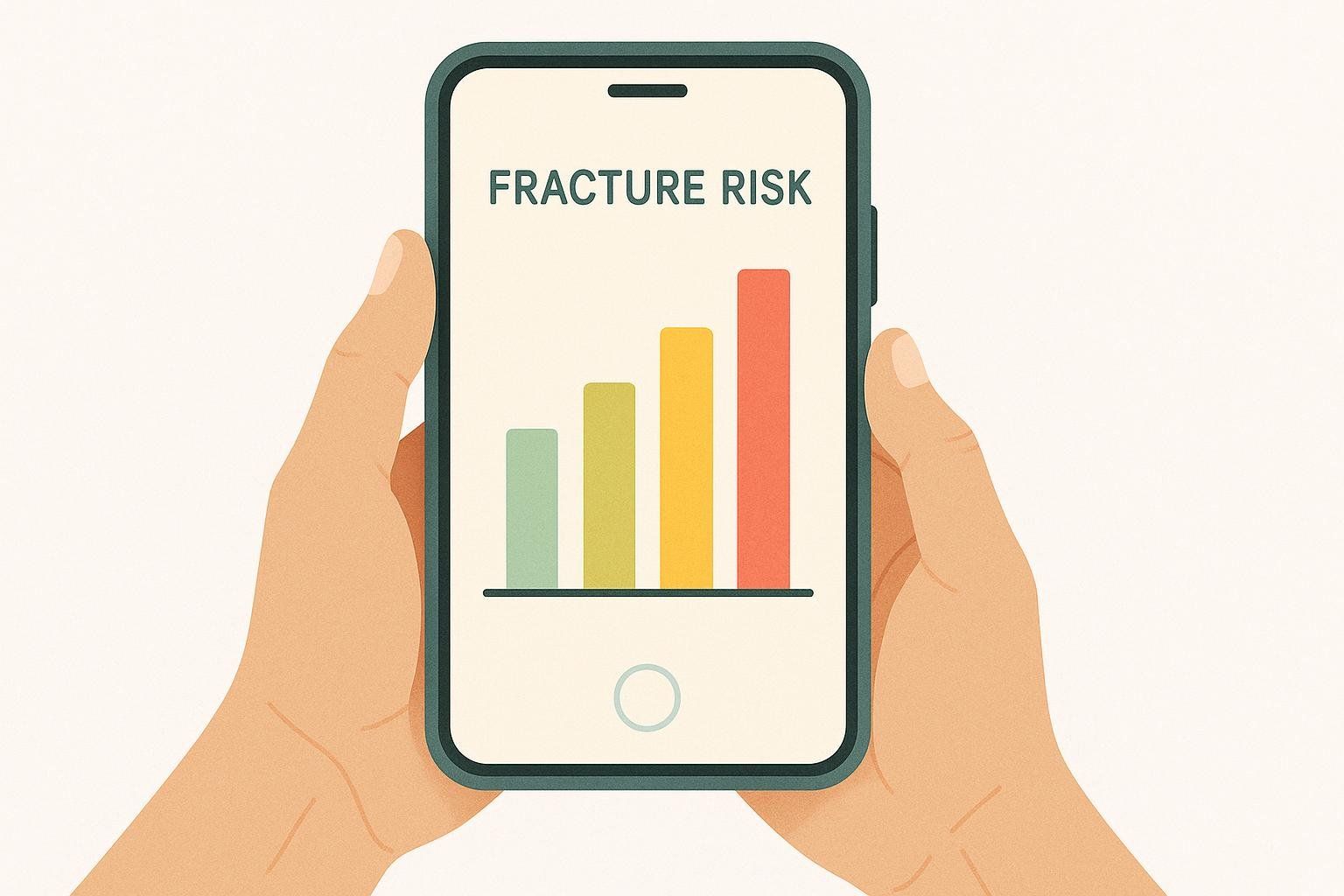
2025 Screening Guidelines at a Glance
| Age Group | USPSTF Recommendation | Typical Insurance Coverage |
|---|---|---|
| 65 + | Screen all women (Grade B) | Medicare Part B covers every 24 months (annually if high-risk) |
| 50–64 with risk factors | Screen (Grade B) | Covered by ACA plans (often no copay); Medicare covers if high risk |
| < 50 with significant medical issues | Case-by-case | Requires medical-necessity paperwork |
What “Grade B” Means
USPSTF grades reflect evidence strength. Grade B indicates “moderate certainty of moderate benefit,” and insurers almost always follow its lead for diagnostic scans.
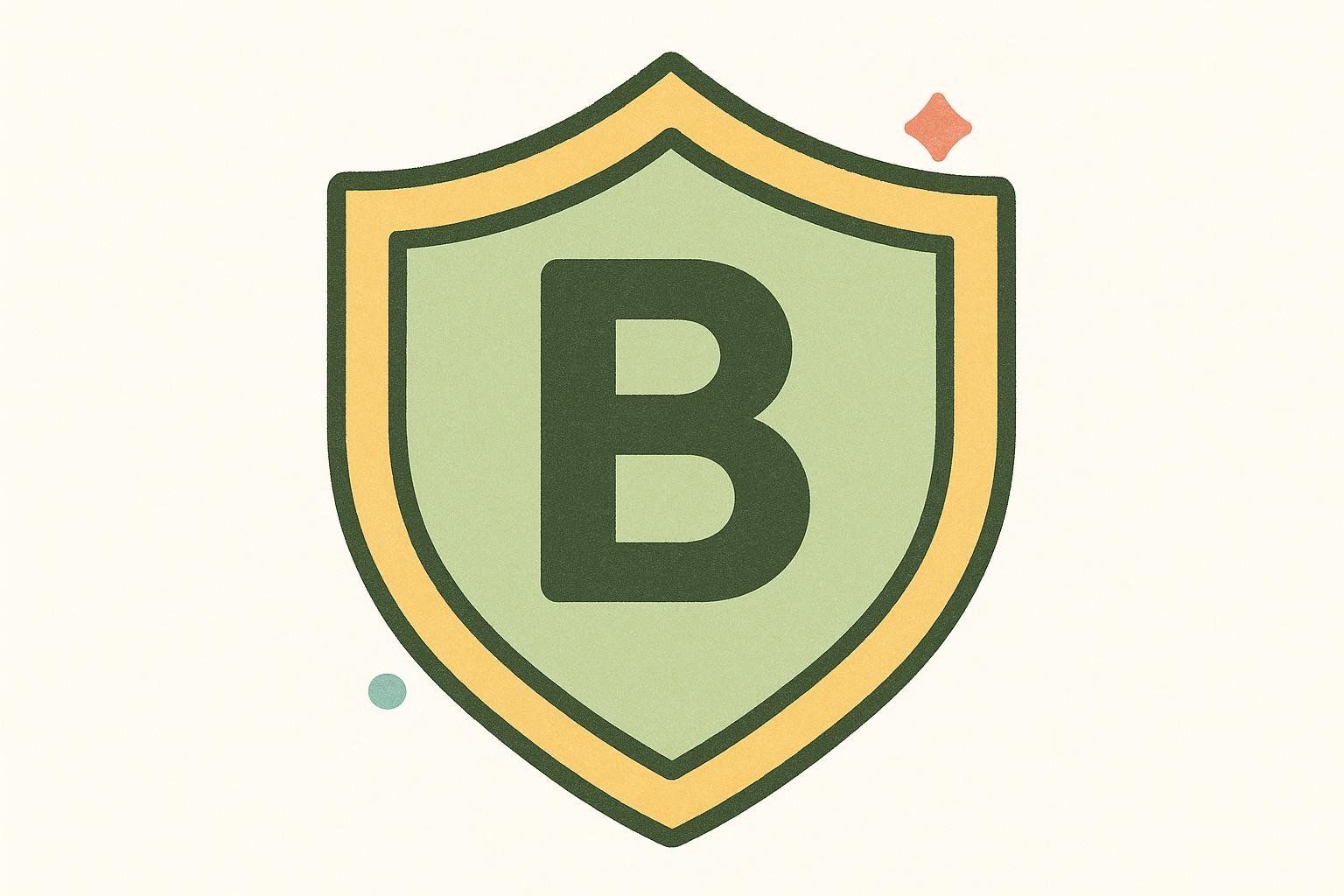
Whole-Body vs. Diagnostic DEXA: Know Your Options
| Feature | Diagnostic Hip/Spine DEXA | BodySpec Whole-Body DEXA |
|---|---|---|
| Primary purpose | Medical diagnosis of osteoporosis and fracture risk | Tracking body-fat, lean-mass, and non-diagnostic bone-density trends |
| Scan regions | Lumbar spine + proximal femur | Entire body including hips/spine |
| FDA diagnostic clearance | ✅ Yes | ❌ No |
| Insurance coverage | Usually covered when medically indicated | Typically low-cost cash pay |
| Best for | Meeting guideline requirements, treatment decisions | Early detection, fitness monitoring, self-tracking |
Because the whole-body scan isn’t intended to confirm an osteoporosis diagnosis, think of it as your first-line scout. If your T-score trends downward or is lower than expected for your age, share the report with your doctor. They may order a diagnostic central DEXA or other tests to nail down next steps.
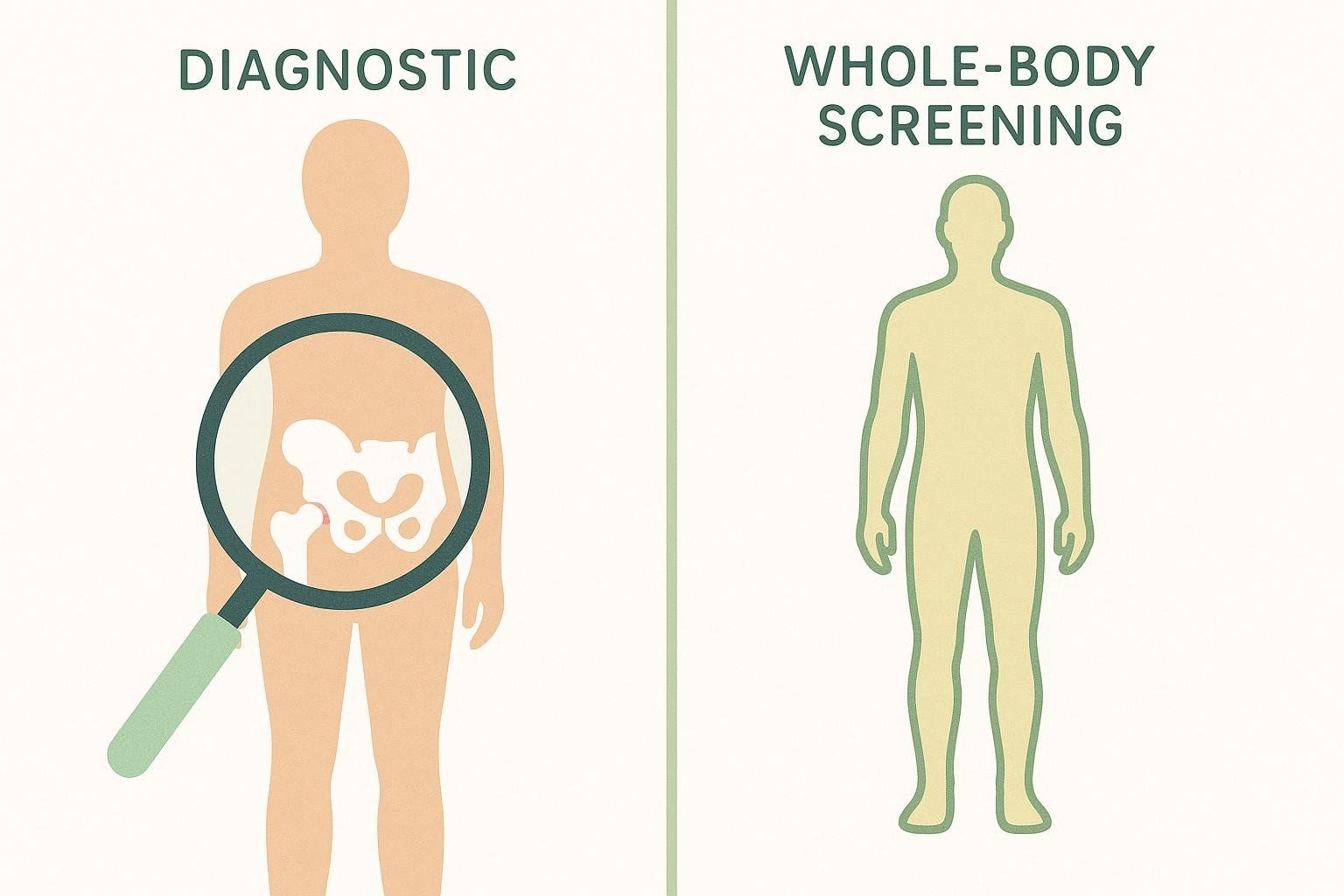
The DEXA Scan, Demystified
Regardless of the type, DEXA is quick and painless. You lie on a padded table while a low-dose X-ray arm glides overhead.
- Radiation dose: ~0.001 mSv—less than a day of natural background radiation (RadiologyInfo). For a detailed explanation, read our guide: DEXA radiation explained.
- Time on table: 10–15 minutes.
- Enclosed space? Nope—open platform.
- Pain? None.
For a blow-by-blow walkthrough, see our step-by-step DEXA guide.
Test-Day Tips
- Skip calcium supplements for 24 hours (they can cloud hip images).
- Wear metal-free clothing—think yoga pants instead of zipper jeans.
- Tell the technologist if you’re pregnant or recently had a barium study.
Paying for Your Scan
- Diagnostic hip/spine DEXA (in a hospital or imaging center):
- Medicare covers every 24 months (annually if high risk or on treatment).
- ACA-compliant plans must cover one scan for women 65 + or younger high-risk women with no copay.
- BodySpec whole-body DEXA: Low-cost cash pay; because it’s non-diagnostic, insurers rarely reimburse—yet you can use FSA/HSA dollars.
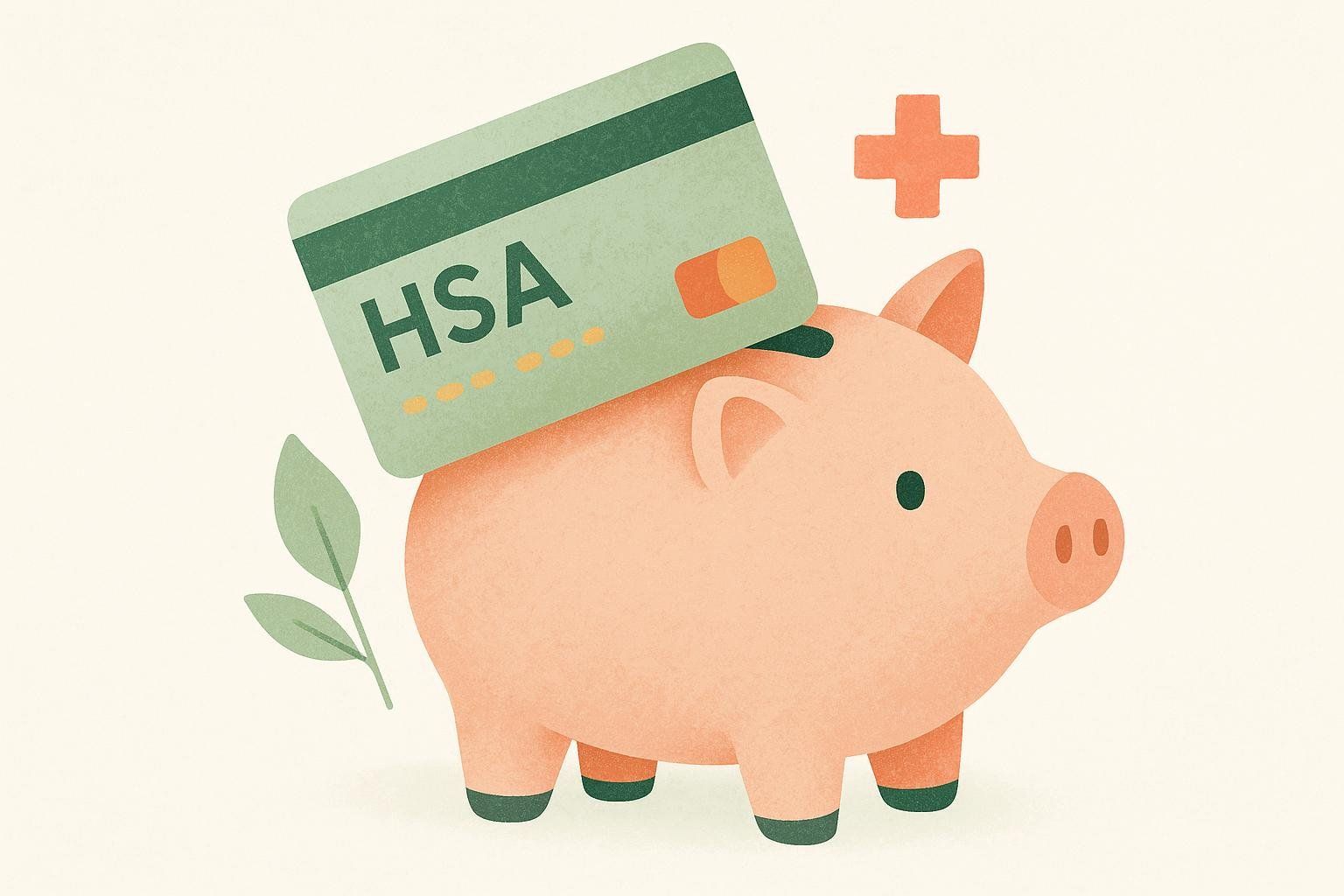
For billing codes and documentation of diagnostic scans, consult the bone-density CPT guide.
How Often Should You Repeat the Test?
| Baseline Result | Suggested Interval (Diagnostic DEXA) |
|---|---|
| Normal (T-score ≥ −1.0) | Every 5–10 years |
| Osteopenia (T-score −1.0 to −2.5) | Every 2–5 years |
| Osteoporosis (T-score ≤ −2.5) or on medication | Every 12–24 months |
These intervals are supported by data from the Women’s Health Initiative cohort (Gourlay ML et al. 2012, NEJM). If you’re tracking bone trends with BodySpec’s whole-body scan, many clients opt for annual scans to monitor subtle changes.
Strengthening Bones Between Scans
Waiting for 65 doesn’t mean waiting to act. Lifestyle upgrades now can support better bone health.
- Lift weights: Follow this strength-training plan for bone health.
- Dial in micronutrients: Vitamin K₂ helps calcium lock into bone—see this guide on vitamin K for bone health.
- Quit smoking & limit alcohol: Both accelerate bone loss.
- Aim for 1,200 mg calcium and 800–1,000 IU vitamin D daily, targets recommended by the Bone Health & Osteoporosis Foundation.
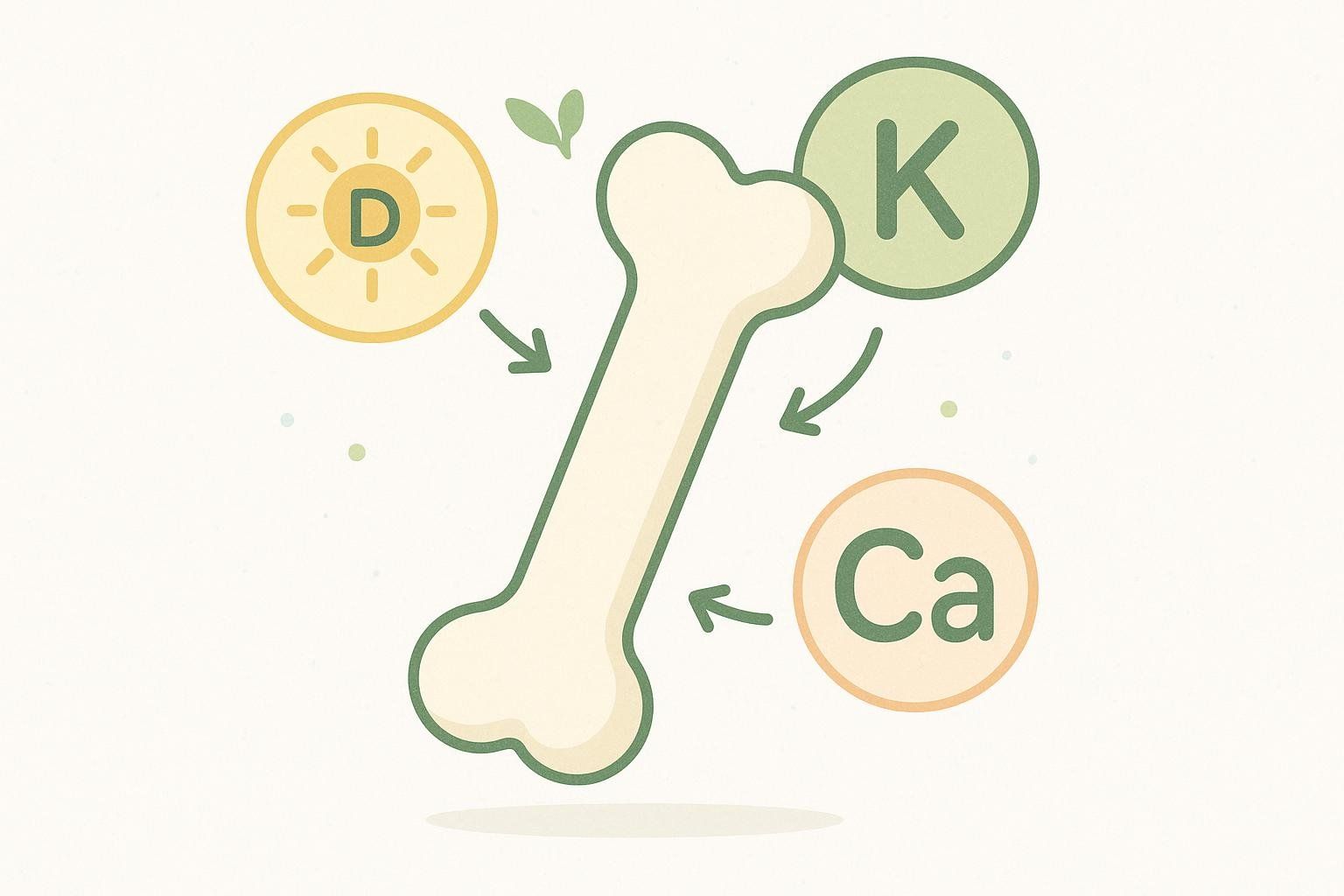
FAQs
Is the radiation dangerous?
No. The dose is extremely low—about 0.001 mSv, roughly the same exposure you get from one day of natural background radiation.
Can I combine body-composition and bone scans?
Yes. BodySpec scanners deliver bone, fat, and muscle data in the same 15-minute session—no extra radiation.
Does my BodySpec result count as an official diagnosis?
No. Whole-body DEXA is screening-level information only. If your numbers suggest low bone density, follow up with your physician for a diagnostic scan.
I’m on hormone-replacement therapy—do I still need screening at 65?
Yes. The American College of Obstetricians and Gynecologists states that all women aged 65 and older should have a bone-density test, regardless of hormone therapy status (ACOG osteoporosis FAQ).
Key Takeaways
- 65 is the default starting line for women’s diagnostic bone-density screening.
- Risk factors can shift that date to the early 50s—or sooner.
- Use the FRAX calculator to personalize timing.
- Consider a BodySpec whole-body scan as an affordable early-detection snapshot—bring abnormal results to your doctor.
- Insurance covers guideline-based diagnostic scans; BodySpec offers a low-cost cash alternative.
- Lifestyle choices today shape tomorrow’s T-score.
Ready to get your first bone health benchmark? Learn how to find a DEXA scan near you. For help making sense of your numbers, see our guide to interpreting DEXA scan results.
